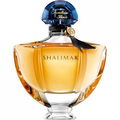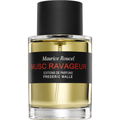05/23/2025

ClaireV
731 Reviews

ClaireV
1
Soft, gingery opoponax
An opoponax wonder. But there are some really nice, interesting things happening in Empire des Indes that make it more than just that. Ginger adds a savory, mealy texture to the cinnamony topnotes, creating a briefly musky, almost urinous twang that some will invariably interpret as Musc Ravageur-lite (ginger does something similar in Shams Oud by Memo). Sandalwood adds a gently peanutty milkiness that fades too quickly for my liking.
Once the spicy-herbal flash flare of the opoponax dies back a little, the scent breathes and stretches its limbs into that golden, toffee-ed resinousness (splashed here and there by Old Spice) that one expects from opoponax in general. But where Empire des Indes innovates is in its earthy shading of this ambery accord with the cocoa-ish dust of patchouli and what smells to me like the curried maple leaf richness of immortelle. (Neither of those notes are listed). These accents, coupled with the dusty nag champa, give the perfume a witchy, leaf-blown tenor that feels like something out of the Solstice Scents catalogue (Foxcroft, Inquisitor, or Manor Fire, for example, some of which feature a similarly indie ‘burning autumn leaves’ accord). Not headshop territory, exactly, but heading in that direction.
Or would be headed, I should say, had Empire des Indes lasted any longer than it does. The trajectory from top to bottom is regrettably short. At least those last tendrils of dusty nag champa seem to be standing in for what otherwise might be a white musk or something abrasive, like Iso E Super, i.e., it carries the perfume across the last mile without compromising any of its delicacy. Still, this is not a terribly rich or deep perfume. It floats in wisps and tendrils and drafts. Indeed, you might say that the only downside to Empire des Indes is its softness. But you know what? Like Fêtes Persanes, that is possibly what I like the most about it.
Once the spicy-herbal flash flare of the opoponax dies back a little, the scent breathes and stretches its limbs into that golden, toffee-ed resinousness (splashed here and there by Old Spice) that one expects from opoponax in general. But where Empire des Indes innovates is in its earthy shading of this ambery accord with the cocoa-ish dust of patchouli and what smells to me like the curried maple leaf richness of immortelle. (Neither of those notes are listed). These accents, coupled with the dusty nag champa, give the perfume a witchy, leaf-blown tenor that feels like something out of the Solstice Scents catalogue (Foxcroft, Inquisitor, or Manor Fire, for example, some of which feature a similarly indie ‘burning autumn leaves’ accord). Not headshop territory, exactly, but heading in that direction.
Or would be headed, I should say, had Empire des Indes lasted any longer than it does. The trajectory from top to bottom is regrettably short. At least those last tendrils of dusty nag champa seem to be standing in for what otherwise might be a white musk or something abrasive, like Iso E Super, i.e., it carries the perfume across the last mile without compromising any of its delicacy. Still, this is not a terribly rich or deep perfume. It floats in wisps and tendrils and drafts. Indeed, you might say that the only downside to Empire des Indes is its softness. But you know what? Like Fêtes Persanes, that is possibly what I like the most about it.






 Top Notes
Top Notes  Musk
Musk Ginger
Ginger Heart Notes
Heart Notes  Heliotrope
Heliotrope Nag Champa
Nag Champa Peru balsam
Peru balsam Base Notes
Base Notes  Benzoin
Benzoin Opoponax
Opoponax Tonka bean
Tonka bean







 DrB1414
DrB1414 Frankcrummit
Frankcrummit Rachelg
Rachelg Metaphysical
Metaphysical Evannell
Evannell Ninamariah
Ninamariah




















